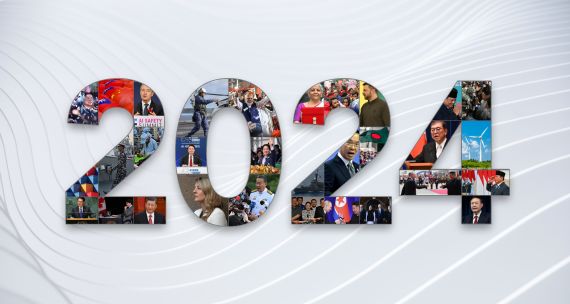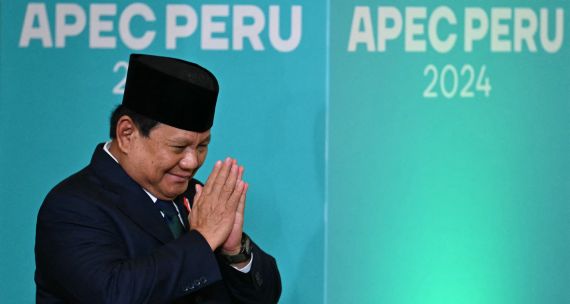The Trump administration has scrambled the cards in the trade policy world. Not only will the North American Free Trade Agreement (NAFTA) be reopened — with uncertain results — but President Donald Trump has scuttled the Trans-Pacific Partnership (TPP) by announcing the United States’ withdrawal from the agreement.
Canada, originally cool toward the TPP, pushed hard to be included in it. The TPP became the centrepiece of Canada’s Asia trade strategy, notwithstanding some public ambivalence on the part of the Trudeau government. Although the TPP in its current form is now in limbo, Canada still has options in Asia — and needs to pursue them as part of an integrated strategy.
First, despite Foreign Affairs Minister Chrystia Freeland’s proclamation that the TPP is “dead”, the obituary is premature. The TPP in its current form cannot come into being without the participation of the United States, but Canada can and should keep an open mind with regard to the possible reconstitution of the TPP in another form, such as “TPP Minus One” (i.e., minus the U.S).
One encouraging sign was Canada’s participation at the ministerial level at the High-Level Dialogue on Integration Initiatives in the Asia-Pacific Region in mid-March in Viña del Mar, Chile. Expectations for this meeting of the TPP partners — plus China, Korea and Colombia — were limited, and all that was agreed on was that ministers and officials would continue the dialogue.
But this is still important. Canada negotiated important market access gains in some of the TPP countries and these should not be lightly discarded. Keeping the dialogue open on a future iteration of something like the TPP keeps these gains in play.
Canada also should push to reopen bilateral negotiations with Japan that were suspended when Japan joined the TPP negotiations. This may be difficult, since Canada is a small market (particularly with the threat of a revision to NAFTA creating uncertainty) and not as attractive to Japan as it was as part of a broader TPP negotiation. Japan clearly will give priority to doing a bilateral deal with the U.S. if the Trump administration is willing, providing another reason to keep the possibility of a “TPP Minus One” in play as a way of engaging Japan.
Canada already is exploring the possibility of an economic partnership agreement with China, perhaps on a sectoral basis. This would be an extremely challenging negotiation because dealing with a large and still relatively closed economy like China is complex and difficult, and because of ambivalent — even negative — public opinion on the idea of doing a deal with China.
There is an opportunity to strike a deal that will benefit Canada, however, since China is eager not only to secure better access to Canadian resources but also to conclude a trading arrangement with a G7 country that just happens to be in the U.S.'s backyard. This gives us negotiating leverage that we should use to our advantage.
The final string to the Asian bow for Canada is the Association of Southeast Asian Nations (ASEAN). Canada should actively pursue negotiation of a free trade agreement (FTA) with the 10-nation ASEAN community, a grouping with almost 600 million people and a growing middle class.
ASEAN's economies range from open, service-oriented market economies like Singapore to huge emerging growth markets like Indonesia and Vietnam, to lesser developed economies such as Cambodia and Myanmar. Each of these markets presents different opportunities for Canadian business. Concluding an FTA with ASEAN could, in time, give Canada access to the Regional Comprehensive Economic Partnership Agreement (RCEP), a plurilateral trade deal currently being negotiated among the 10 ASEAN countries and six of its bilateral partners.
Participation in RCEP is open to any country with a bilateral FTA with ASEAN and would position Canada well in the event that a Free Trade Area of Asia-Pacific (FTAAP) ever emerges. This would be an important strategic move by Canada to truly embed itself in the Asia-Pacific region, particularly if the TPP is never resurrected.
So far, Canada and ASEAN have announced that officials of both countries have been charged to develop the terms of reference for a feasibility study on a possible FTA. While this is a good initial step, Canada needs to increase the pace and more aggressively move the process forward. The time to strike is now.
In the meantime, uncertainty regarding NAFTA's future needs to be addressed. The uncertainty over the extent of future access to the U.S. market from Canada makes it more difficult for Canada to attract Asian investment (although, ironically, it provides further impetus for Canada to diversify its trading relationships and to explore stronger relationships with Asian economies).
NAFTA is a must-do for Canada. At the same time, Canada needs to take advantage of the current realignment of interests in the Asia-Pacific to assert its trade and strategic interests more forcefully.
With a U.S. administration looking inward, a resurgent China looking to fill part of the space left by the U.S., and other players in Asia-Pacific wanting to send the signal that globalization is not dead, this is an opportune time for Canada to roll out an integrated Asia-Pacific strategy.
This piece was first published by iPolitics on April 26, 2017



